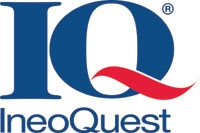
After more than 40 years of operation, DTVE is closing its doors and our website will no longer be updated daily. Thank you for all of your support.
Q&A: IneoQuest’s Kirk George on the future of OTT and multiscreen
 IneoQuest Technologies director of marketing Kirk George talks to DTVE about quality assurance for OTT and multiscreen services.
IneoQuest Technologies director of marketing Kirk George talks to DTVE about quality assurance for OTT and multiscreen services.
 To what extent can the quality of OTT and multiscreen video services equal that of broadcast TV or IPTV? Is the ambition of operators to deliver OTT/multiscreen services with a Quality of Service that matches regular TV realistic?
To what extent can the quality of OTT and multiscreen video services equal that of broadcast TV or IPTV? Is the ambition of operators to deliver OTT/multiscreen services with a Quality of Service that matches regular TV realistic?
Delivering adaptive streaming video services with a quality of experience matching that of broadcast TV or IPTV has many challenges, but, with today’s advanced solutions for OTT/multiscreen video analytics and service assurance, it is not an unattainable goal. Today, there is much confidence for OTT and multiscreen video services that improved compression and CDN technologies will deliver picture quality and reliability equal to that of broadcast TV.
What practical tools are at service providers’ disposal to meet these new expectations?
Video providers have several solutions available to them today that provide visibility into the multiscreen and OTT delivery network. IneoQuest has the only end-to-end video analytics and service assurance solution for multiscreen and OTT, which follows the same service assurance methodologies of those available for traditional broadcast TV, providing monitoring of Quality of Service (QoS) & Quality of Experience (QoE) throughout the network from the source to the connected device.
To what extent can service level agreements (SLAs) between service providers and content owners be maintained when content is delivered over third party CDNs and what controls do service providers have when delivering over multiple networks?
The key to maintaining SLAs between service providers and content owners is visibility into the unmanaged network. As there are SLAs between content owners and service providers to preserve the integrity of the content, there are also SLAs between the service providers and third party CDNs to preserve the delivery of the content. IneoQuest offers a few solutions for service providers and content owners to ensure CDNs are meeting their agreements. One such solution is a cloud-based monitoring service that ensures content available at particular locations are receiving the video services at the expected quality levels. Additionally, with iVMS ASM, a video management system, and IQDialogue ASM, probing technology that monitors post-caching servers of the adaptive video network, an aggregated view of services being delivered across third party CDNs is provided. IneoQuest also offers a software client analytics library that can be compiled into the video app, so that QoS & QoE can be measured within the device. With these solutions, video providers can monitor that CDNs are complying with the agreement.
What impact does adaptive bit-rate streaming have on quality and how can this be best managed in the case of premium services?
Adaptive streaming video quality is at the mercy of the network bandwidth. As the bandwidth availability decreases, video quality is also decreased to a lower bit-rate to ensure the viewer receives a constant stream of video. Adaptive streaming video can be best managed by monitoring the network bandwidth and the video quality, and understanding the subscriber viewing behavior. Only by understanding the quality of the delivered services, the network bandwidth, and the subscriber’s viewing behavior, can quality of experience be managed effectively.
What information on consumer habits can be usefully be derived from investment in quality of service monitoring and how can this be used by service providers to maximize the value of their services?
Understanding consumer viewing habits is crucial to maximizing the value of services in a managed or unmanaged network. Behavioral data, such as what services are most popular, how long watched, on what device, what location, what CDN delivering service, along with operational data (QoS and QoE metrics, outages, MTTR), will provide insights to properly manage the viewer experience. For example, if a group of subscribers leave a program after 30 seconds, service providers need to know why this has occurred. If a provider is just gathering behavioral data, this can tell the number of subscribers that stopped watching, what devices, location, etc., but not why the subscribers left. If a provider gathers just operational data, then it only tells the provider that there was an issue, but cannot help in showing the scope of the issue. With both operational and behavioral data, a provider can understand that the group of subscribers stopped watching because there was an issue in the delivery of service, the scope of the issue, and then pinpoint the problem.
What areas are you currently focusing on in terms of product development and innovation?
At this time, IneoQuest is focusing on the virtualization of our probing technologies for adaptive streaming networks to support Network Functions Virtualization (NFV) efforts. We are also working on integrating IQDialogue ASM into mobile edge devices like the Intel smart cell. With our solutions virtualized and expanding into mobile networks, CDNs and mobile operators can better understand and guarantee their services.
Visit www.ineoquest.com